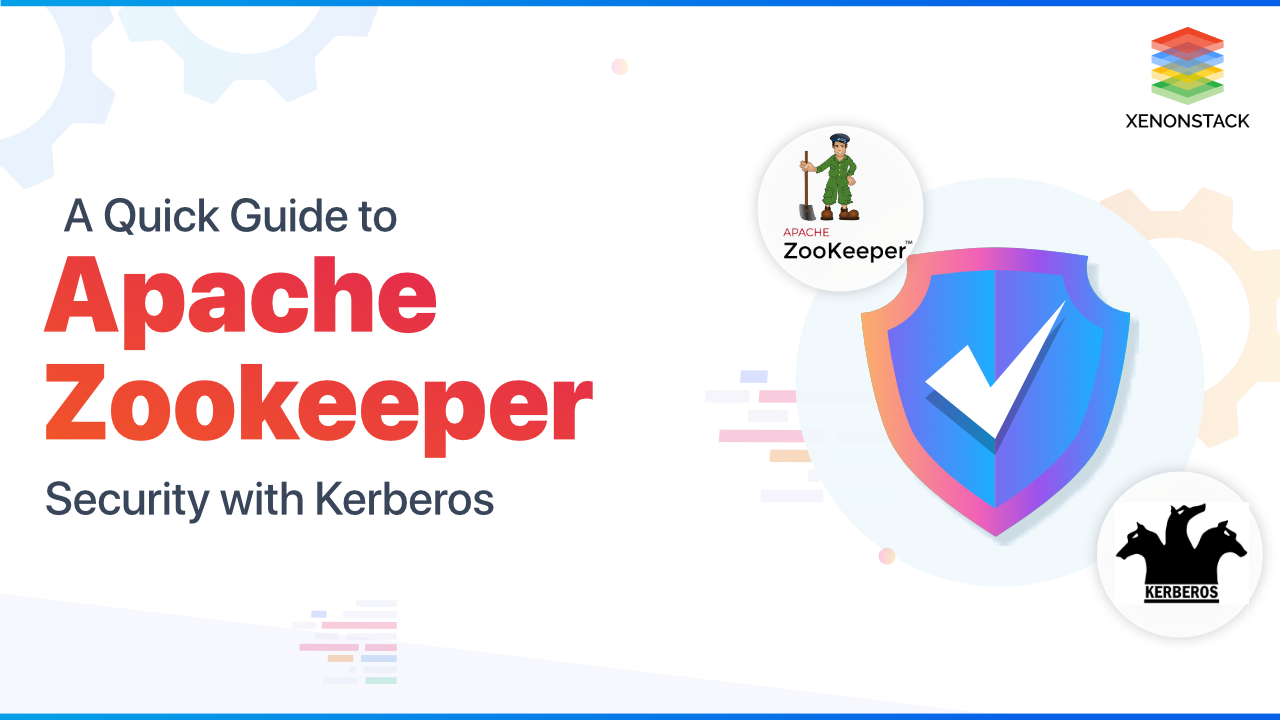
Unlocking the Power of Apache Zookeeper Security
Before delving into Apache Zookeeper Security, it’s important to understand what Zookeeper is. Zookeeper is a distributed coordination service used to manage large clusters, providing crucial functions such as configuration management, synchronization, and cluster management. It ensures high availability and fault tolerance across distributed systems. For organizations using AWS security tools or Amazon EKS security, it integrates well with modern infrastructure, helping ensure security hardening. Additionally, Apache ZooKeeper is often used in conjunction with botnets, network penetration testing, and security testing tools, ensuring robust website security.
What is Apache Zookeeper?
Zookeeper is primarily helpful in managing large distributed environments that form complex clusters, which are difficult to manage effectively. The origin of Zookeeper traces back to Yahoo, but due to its simple architecture, it has become a standard for organizations using frameworks like Hadoop, HBase, and many others. In the past, when these distributed systems were implemented, a significant amount of time and resources were spent fixing the bugs that occurred during the process. In this context, Zookeeper stands out as the best choice. It provides full control over synchronization and coordination across the entire cluster, ensuring seamless distributed coordination and management.
A centralized service for naming, configuration information, providing group services, and providing distributed synchronization. Click to explore about, Apache ZooKeeper on Kubernetes
Understanding the Architecture Behind Apache Zookeeper
The basic architecture of Zookeeper consists of a simple client-server model where both act as nodes. This type of architecture helps reduce latency and provides high availability. It consists of the client library, where applications make calls, and the interaction of these calls with the servers takes place. The architecture is designed to be easily implemented and operated. It must have a high capacity to tolerate failures and quickly recover in case of an exit. Zookeeper runs in two modes:
-
Standalone Mode: Zookeeper has a single server and is not in the state of replication.
-
Quorum Mode (Zookeeper Ensemble): A group of Zookeeper servers that have state replication and work together to serve client requests.
The basic architecture of Zookeeper shows that one Zookeeper client connects to one Zookeeper server. Requests from clients are handled by the servers, with each server capable of managing a large number of clients simultaneously. The client sends a ping request to the server to ensure it is alive and connected. In response, the server acknowledges the ping, confirming that the server is live and connected. If the client does not receive any acknowledgment or response from the server within a set time, it will attempt to connect to a different server in the ensemble. This allows the client's session to be transferred to a different Zookeeper server.
Apache Flink provides first-class support for the authentication of Kerberos only while providing effortless requirements to all connectors related to security. Click to explore, Apache Flink Security and its Deployment
Securing Apache Zookeeper with Kerberos: A Step-by-Step Guide
For Apache Zookeeper Security, the authentication process takes place on the server and the client sides (which is an optional case ). A keytab file is generated under some policy and placed under some configuration files that will help us authenticate the security through Kerberos authentication.
-
First of all, we have to Create a principal for each Zookeeper Quorum Server host. This can be done by the following command
kadmin: addprinc -randkey zookeeper/host_fqdn@REALM
-
Now, we have to create Keytab files for each Zookeeper server host. To do this, run the following command
ktadd -norandkey -k /etc/security/phd/keytab/zookeeper-hostid.service.keytab zookeeper/host_fqdn@REALM
-
This created Zookeeper Keytab file has to be distributed to each Zookeeper server host. Make an entry for this file in the /etc/security/phd/keytab directory and then assign them permission by running the following commands.
chgrp hadoop zookeeper-hostid.service.keytab
chown zookeeper zookeeper-hostid.service.keytab
chmod 400 zookeeper-hostid.service.keytab
ln -s zookeeper-hostid.service.keytab zookeeper.service.keytab
-
Now Edit the Zookeeper Configuration File and Add the following lines to /etc/gphd/zookeeper/conf/zoo.cfg authProvider.1=org.apache.zookeeper.server.auth.SASLAuthenticationProvider jaasLoginRenew=3600000
-
Now by creating a file in the /etc/gphd/zookeeper/conf/jaas.conf and then enter the following
Server {
com.sun.security.auth.module.Krb5LoginModule required
useKeyTab=true
keyTab="/etc/security/phd/keytab/zookeeper-hostid.service.keytab"
storeKey=true
useTicketCache=false
principal="zookeeper/host_fqdn@REALM";
};
-
Now create the file and add these lines at
/etc/gphd/zookeeper/conf/java.env and then add export JVMFLAGS="-Djava.security.auth.login.config=/etc/gphd/zookeeper/conf/jaas.conf"
-
Sometimes the JVMFLAGS already exist, so we can modify them as
export JVMFLAGS="-Xmx2048m -Djava.security.auth.login.config=/etc/gphd/zookeeper/conf/jaas.conf"-
Now we can verify the Zookeeper configuration as
-
Start up the cluster and connect using a client. Connect as:
zookeeper-client -server hostname:port
-
Create a protected Znode
create /testznode testznodedata sasl:zkcli@REALM:cdwra
-
This node can be verified as
getAcl /testznode:
We will be getting results like
'sasl,'zkcli@{{BIGDATA.COM%7D%7D
: cdrwa
This will help us secure a session with the Zookeeper client. We have to test this by starting the Zookeeper client and then connecting to it.
Real-World Use Cases and Applications of Apache Zookeeper
Apache ZooKeeper is widely utilized in various distributed systems to enhance distributed coordination and ensure high availability. Here are some practical applications:
- Hadoop Ecosystem: ZooKeeper plays a crucial role in managing and coordinating nodes within a Hadoop cluster, including the NameNode and DataNode. It helps maintain configuration information and manages the state of the cluster, ensuring that all components work together seamlessly.
- Kafka: In Apache Kafka, ZooKeeper manages distributed brokers, maintains metadata, and coordinates leader elections among partitions. This ensures that messages are consistently delivered and that the system remains fault-tolerant.
- HBase: ZooKeeper is essential for HBase as it manages region servers, handles master server failover, and provides distributed synchronization for read/write operations.
- Configuration Management: Applications can use ZooKeeper to store configuration settings centrally, allowing dynamic updates without restarting services. This is particularly useful for microservices architectures deployed on platforms like Amazon EKS Security.
- Leader Election: In scenarios where a single instance must be active at any time (like a master node), ZooKeeper facilitates leader election processes, ensuring that only one node performs critical tasks at any given moment.
Top Best Practices for Optimizing Apache Zookeeper Usage
To effectively use and maintain Apache ZooKeeper installations, consider the following best practices:
-
Cluster Configuration: Always deploy ZooKeeper in an ensemble of at least three nodes to achieve fault tolerance and ensure high availability. This setup helps prevent a single point of failure.
-
Session Management: Properly manage client sessions by configuring appropriate session timeouts. Clients should send regular heartbeats to keep sessions alive, preventing unexpected disconnections.
-
Data Model Optimization: Utilize the hierarchical data model effectively by organizing znodes logically. Avoid creating too many child znodes under a single parent to prevent performance degradation.
-
Security Hardening: Implement security measures such as TLS encryption, access control lists (ACLs), and authentication mechanisms (e.g., Kerberos) to protect data integrity and confidentiality.
-
Monitoring and Maintenance: Regularly monitor the health of your ZooKeeper ensemble using monitoring tools to track performance metrics and detect potential issues early. Consider using penetration testing tools to assess security vulnerabilities regularly.
-
Backup Strategies: Regularly back up ZooKeeper data to recover quickly from failures or data loss incidents. Ensure that backup processes do not interfere with normal operations.
-
Documentation and Compliance: Maintain thorough documentation of your ZooKeeper configuration and operations procedures to facilitate troubleshooting and ensure compliance with standards such as GDPR compliance.
Wrapping Up: Key Takeaways on Apache Zookeeper Security
Apache Zookeeper is invaluable for enterprises, significantly improving the processing of data while tackling complex issues efficiently. However, to fully benefit from its potential, security hardening and TLS encryption are critical to protecting operational data. Ensuring GDPR compliance and effective penetration testing tools are also key to maintaining strong website security. With its open-source foundation, distributed systems, and AWS security tools, Apache Zookeeper remains a cornerstone for secure, scalable systems.
{% module_block module "widget_e2e379a8-df55-4ad5-b684-128667b22952" %}{% module_attribute "child_css" is_json="true" %}null{% end_module_attribute %}{% module_attribute "css" is_json="true" %}null{% end_module_attribute %}{% module_attribute "label" is_json="true" %}null{% end_module_attribute %}{% module_attribute "module_id" is_json="true" %}182744331918{% end_module_attribute %}{% module_attribute "schema_version" is_json="true" %}2{% end_module_attribute %}{% module_attribute "tag" is_json="true" %}"module"{% end_module_attribute %}{% end_module_block %}
- Learn more about Secure Apache Storm with Kerberos
- Get in Touch with us to learn how to enable Apache Zookeeper Security
- Get an insight into Secure HBase with Kerberos


